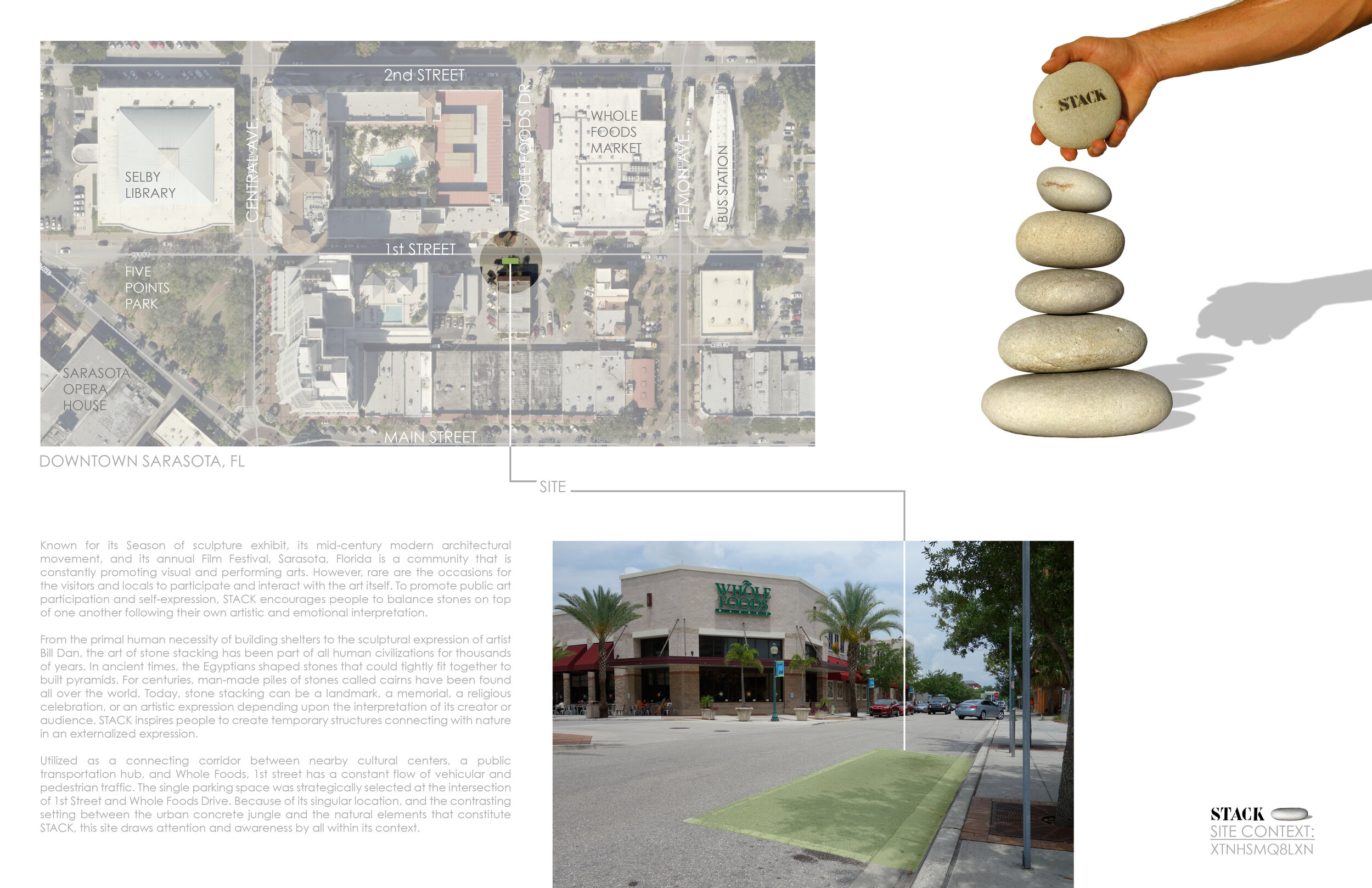STACK
Known for its Season of Sculpture exhibit, mid-century modern architectural movement, and annual Film Festival, Sarasota, Florida, community constantly promotes visual and performing arts. However, occasions for visitors and locals to participate and interact with the art are rare. To promote public art participation and self-expression, STACK encourages people to balance stones on one another, following their own artistic and emotional interpretation.
From the primal human necessity of building shelters to the sculptural expression of artist Bill Dan, the art of stone stacking has been part of all human civilizations for thousands of years. In ancient times, the Egyptians shaped stones that could tightly fit together to build pyramids. For centuries, man-made piles of stones called cairns have been found worldwide. Today, stone stacking can be a landmark, a memorial, a religious celebration, or an artistic expression, depending upon the interpretation of its creator or audience. STACK inspires people to create temporary structures connecting with nature in an externalized expression.
Utilized as a connecting corridor between nearby cultural centers, a public transportation hub, and Whole Foods, 1st Street has a constant vehicular and pedestrian traffic flow. The single parking space was strategically selected at the intersection of 1st Street and Whole Foods Drive. This site draws attention and awareness because of its singular location and the contrasting setting between the urban concrete jungle and the natural elements that constitute STACK.
Part natural and part manmade stone stacking is the symbiotic collaboration of humans with nature. STACK embodies this concept through the use of materials to facilitate its construction.
As balancing stones require patience to create balance, it is essential to establish a transition in the mind of the participants entering STACK. Identified with beach settings, zen gardens, or children's playgrounds, sand is utilized as a soft base to evoke a relaxing and stress-free feeling. Encouraged by its delicate nature and soothing texture, people can walk barefoot, children can play with it, and participants can use it as a flexible base for the stone stacks.
As stone stacking is also associated with versatile creativity and interpretation, wood is utilized for its similar characteristics and fabrication flexibility. 2x6 recycled southern yellow pine lumber is employed in this manner. First, since not everyone can easily step or walk on sand, a wooden platform adjacent to the sidewalk provides a natural surface for ADA access. In addition, fabricated wood boxes 6 inches tall with horizontal modules of 18 inches can be stacked for multiple purposes. Ranging from benches to pedestals for the stacks, the boxes also provide a semi-opaque three-foot tall enclosure to protect people from nearby traffic. The voids created by the random stacking of the boxes offer niches for the display of the stones.
Following the module of the wood stacks, welded wire mesh gabions are located at strategic points throughout the installation. Unlike the free-form stacks of stones generated by the participants' artistic approach, the gabion structures are containers of stones that can be stacked as architectural elements to define the space.
To soften the edge but also to increase the verticality of the 3' tall enclosure separating STACK and the adjacent street, Equisetum grass (horsetail) is used in conjunction with the gabions. Similarly, two existing oak trees on the opposite sidewalk further define the space and provide dappled light and shade throughout the day.
Location:
Downtown | Sarasota, Florida
Awards:
2014 | AIA Florida/Caribbean Parking Day Competition, 1st Place





